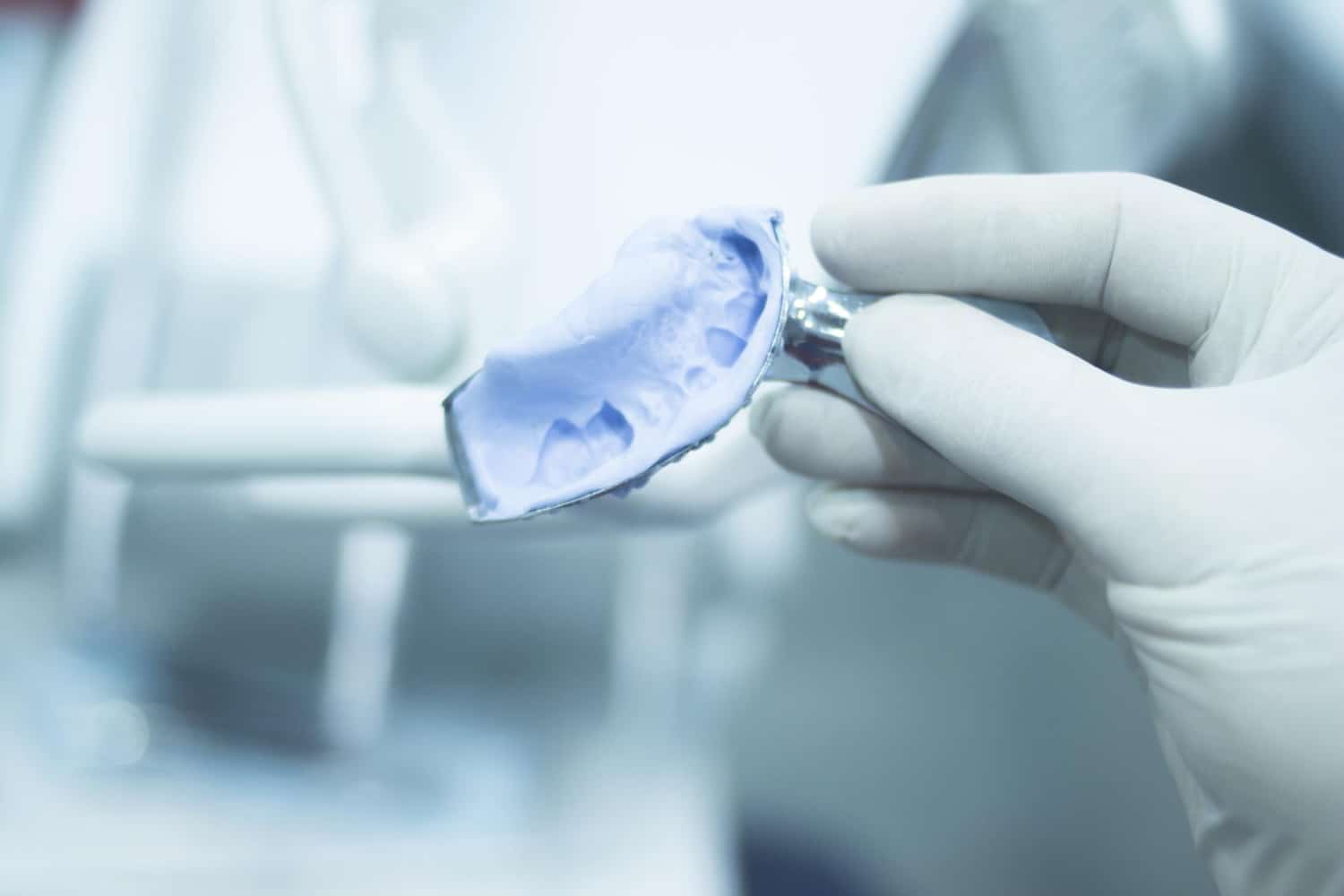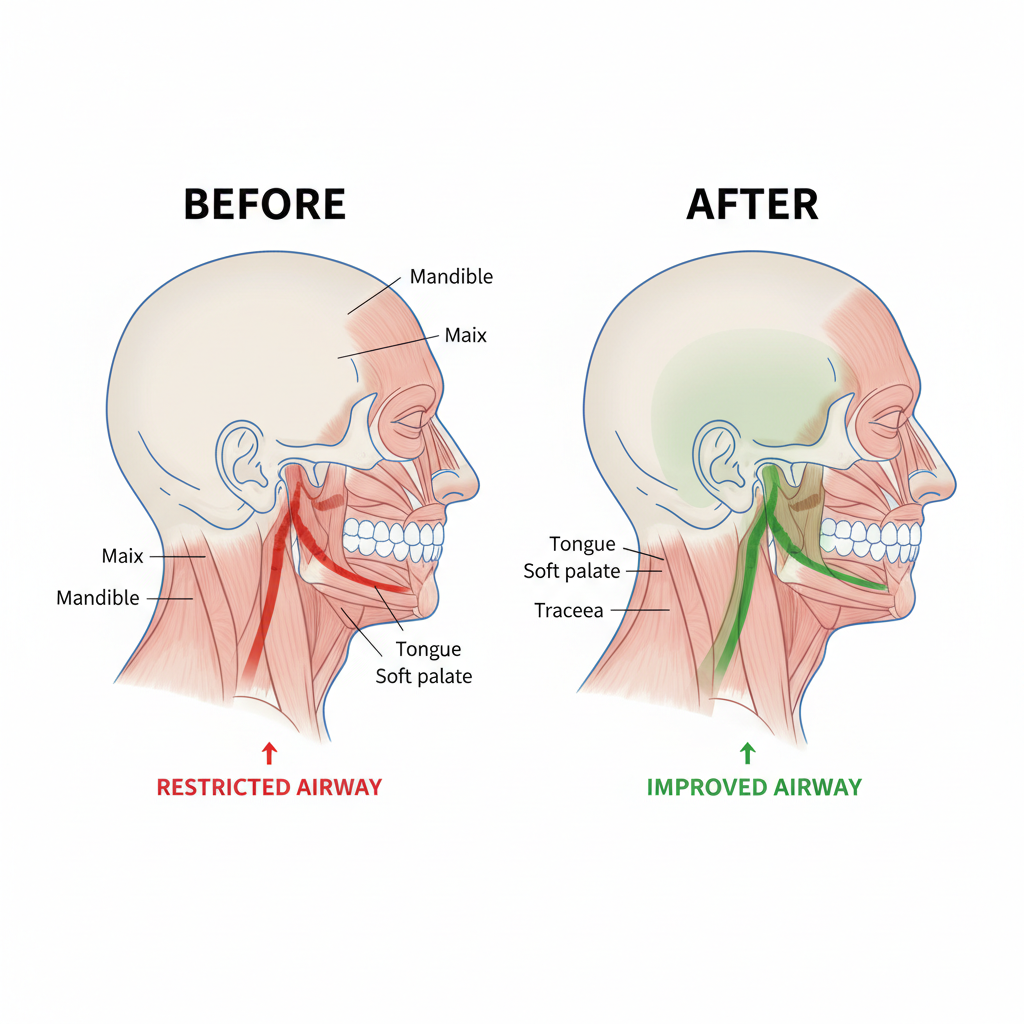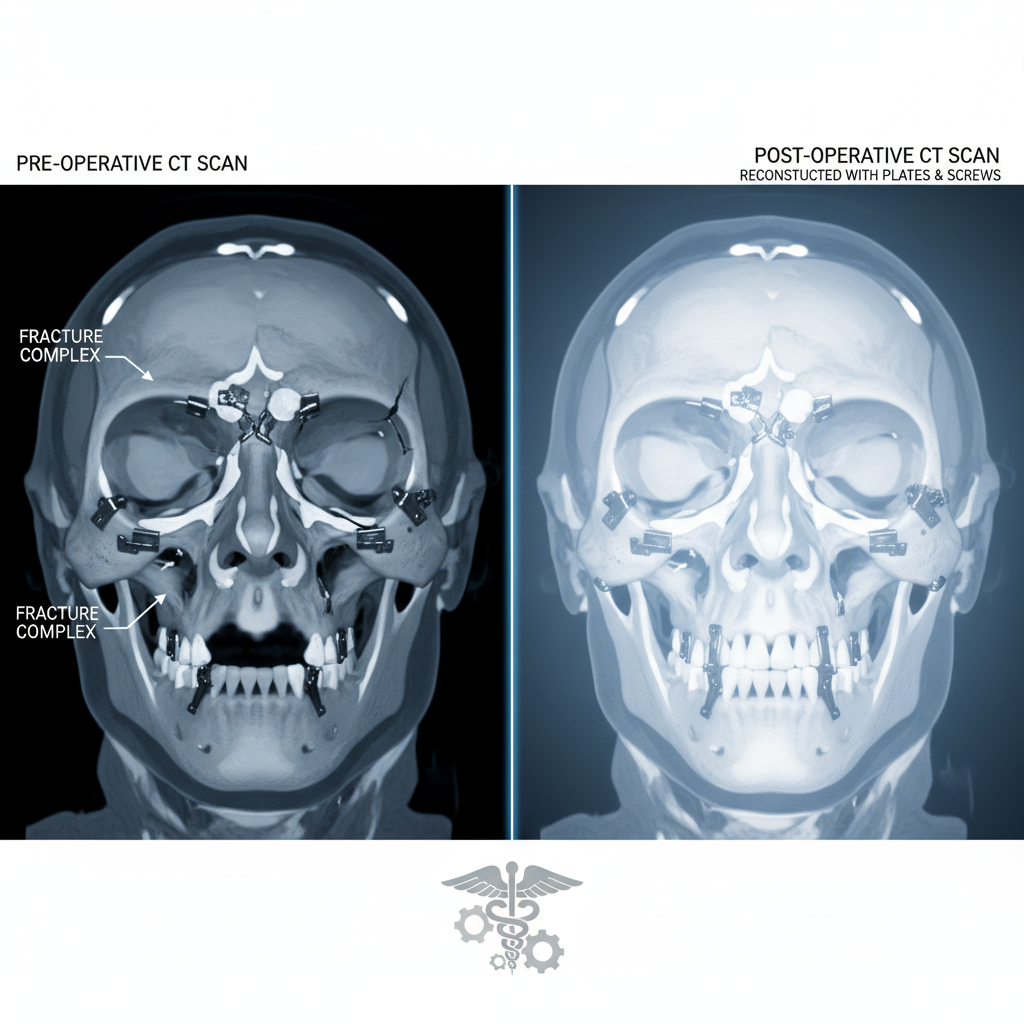Are you feeling self-conscious about your smile? Do you struggle with dental issues that go beyond the surface? It might be time to explore the world of orthognathic surgery. Orthognathic surgery, also known as corrective jaw surgery, is a medical procedure that can transform not only your smile but also your overall facial structure and function. Whether you have misaligned jaws, a protruding or receding chin, or issues with your bite, orthognathic surgery can provide a long-lasting solution.
In this article, we delve into the fascinating realm of orthognathic surgery, exploring its purpose, procedures, and benefits. We’ll discuss how this specialized surgical approach can correct a range of skeletal irregularities, improving not only the aesthetics but also the functionality of your jaw and teeth. Orthognathic surgery is a life-changing experience for many, and understanding the process can help alleviate any concerns or fears you may have. So, join us as we unravel the world of orthognathic surgery and discover how it can help transform your smile and boost your confidence.
What is orthognathic surgery?
Orthognathic surgery, also known as corrective jaw surgery, is a specialized medical procedure that addresses skeletal irregularities in the jaw and facial structure. This type of surgery is primarily performed by oral and maxillofacial surgeons, who are experts in the diagnosis, treatment, and management of conditions affecting the jaw, face, and surrounding structures.
The term “orthognathic” comes from the Greek words “orthos” meaning “straight” or “correct,” and “gnathos” meaning “jaw.” The goal of orthognathic surgery is to realign the jaws, either the upper jaw (maxilla) or the lower jaw (mandible), or both, to improve the overall function and appearance of the face. This surgical approach is often recommended for individuals who have congenital or acquired dental and facial deformities that cannot be adequately addressed through orthodontic treatment alone.
Orthognathic surgery is a complex and precise procedure that requires extensive planning and coordination between the oral and maxillofacial surgeon, orthodontist, and other healthcare professionals. The surgery is typically performed under general anesthesia and can involve the repositioning, reshaping, or resizing of the jawbones to achieve the desired aesthetic and functional outcomes. By addressing the underlying skeletal issues, orthognathic surgery can significantly improve the patient’s bite, chewing ability, speech, and overall facial harmony, ultimately enhancing their quality of life.
Common dental issues that may require orthognathic surgery
Orthognathic surgery is often recommended for individuals who suffer from a range of dental and facial irregularities that cannot be adequately treated with orthodontic treatment alone. Some of the most common dental issues that may require orthognathic surgery include:
Malocclusion: Malocclusion refers to a misalignment of the upper and lower jaws, resulting in an improper bite. This can manifest in various forms, such as an overbite (where the upper teeth protrude significantly over the lower teeth), an underbite (where the lower jaw protrudes in front of the upper jaw), or a crossbite (where the upper and lower teeth do not align properly).
Skeletal Deformities: Certain congenital or acquired skeletal deformities, such as a receding chin (retrognathia), a protruding chin (prognathia), or asymmetrical facial features, can significantly impact the appearance and function of the face. Orthognathic surgery can be used to correct these structural abnormalities and restore facial balance and harmony.
Temporomandibular Joint (TMJ) Disorders: Issues with the temporomandibular joint, the joint that connects the lower jaw to the skull, can lead to pain, clicking, or locking of the jaw. In some cases, orthognathic surgery may be recommended to address the underlying skeletal causes of TMJ disorders and provide long-term relief.

Benefits of orthognathic surgery
Orthognathic surgery offers a wide range of benefits for individuals seeking to address dental and facial irregularities. Some of the key advantages of this specialized surgical approach include:
Improved Facial Appearance: By correcting skeletal and dental deformities, orthognathic surgery can significantly enhance the overall appearance of the face. This can lead to improved self-confidence and a more harmonious facial balance.
Enhanced Functionality: Orthognathic surgery can address issues with chewing, biting, and swallowing, improving the patient’s ability to perform these essential functions. This can have a positive impact on the individual’s overall quality of life and general health.
Alleviation of Respiratory Issues: In some cases, skeletal irregularities in the jaw and facial structure can contribute to breathing difficulties or sleep apnea. Orthognathic surgery can help address these respiratory problems, leading to improved sleep and better overall health.
The orthognathic surgery process
The orthognathic surgery process typically involves a comprehensive evaluation and planning stage, followed by the surgical procedure and a recovery period. Here’s a closer look at the various steps involved:
Consultation and Evaluation: The first step in the orthognathic surgery process is a thorough evaluation by an oral and maxillofacial surgeon. This evaluation includes a comprehensive review of the patient’s medical history, a physical examination, and diagnostic tests such as X-rays, CT scans, and 3D imaging to assess the extent of the dental and facial irregularities.
Treatment Planning: Based on the evaluation, the surgeon, in collaboration with an orthodontist, will develop a customized treatment plan. This plan will outline the specific surgical procedures required to address the patient’s concerns, as well as any pre-surgical orthodontic treatment that may be necessary to prepare the teeth and jaws for the surgery.
Surgical Procedure: The orthognathic surgery itself is typically performed under general anesthesia and can take several hours, depending on the complexity of the case. The surgeon will make precise incisions and reposition the jawbones to achieve the desired alignment and appearance. In some cases, bone grafting or other techniques may be used to support the new jaw position.
Preparing for orthognathic surgery
Preparing for orthognathic surgery is an important step in the process, as it helps ensure a smooth and successful outcome. Here are some of the key ways patients can prepare for their orthognathic surgery:
Pre-Surgical Orthodontic Treatment: In many cases, patients will undergo a period of pre-surgical orthodontic treatment to align their teeth and prepare the jaws for the surgical procedure. This may involve the use of braces or other orthodontic appliances to move the teeth into their desired positions.
Medical Evaluation and Clearance: Patients will undergo a comprehensive medical evaluation to ensure they are healthy enough to undergo the surgical procedure. This may include blood tests, a physical examination, and the clearance from the patient’s primary care physician or other specialists as needed.
Lifestyle Adjustments: Patients may be advised to make certain lifestyle adjustments in the weeks or months leading up to their surgery, such as quitting smoking, maintaining a healthy diet, and avoiding certain medications or supplements that could interfere with the surgical process.

Recovery and aftercare following orthognathic surgery
The recovery process following orthognathic surgery can vary, depending on the complexity of the procedure and the individual patient’s healing process. However, there are some common steps and considerations during the recovery period:
Immediate Post-Operative Care: Immediately after the surgery, patients will typically spend some time in the hospital for close monitoring and pain management. They may have their jaws wired or banded together to help stabilize the new jaw position during the initial healing process.
Soft Diet and Nutrition: For the first several weeks following the surgery, patients will be required to follow a liquid or soft diet to avoid putting too much pressure on the newly repositioned jaws. This is an important step in the healing process and helps ensure the proper alignment of the bones.
Physical Therapy and Rehabilitation: As the patient’s recovery progresses, they may be referred to physical therapy or other rehabilitation services to help regain full functionality of the jaw, including range of motion, strength, and coordination.
Risks and complications of orthognathic surgery
While orthognathic surgery is generally considered a safe and effective procedure, there are some potential risks and complications that patients should be aware of:
Infection: As with any surgical procedure, there is a risk of infection at the surgical site. Patients will be prescribed antibiotics to help prevent and manage any infections that may occur.
Nerve Damage: The surgical repositioning of the jawbones can potentially impact the nerves in the area, leading to temporary or, in rare cases, permanent numbness or tingling in the lips, chin, or tongue.
TMJ Issues: In some cases, the surgical changes to the jaw structure can lead to or exacerbate temporomandibular joint (TMJ) disorders, causing pain, clicking, or locking of the jaw.
Alternative treatments for dental issues
While orthognathic surgery is often the most effective solution for addressing complex dental and facial irregularities, there are also alternative treatments that may be considered in certain cases:
Orthodontic Treatment: In some instances, orthodontic treatment alone, without the need for surgery, may be sufficient to address minor misalignments or bite issues. This may involve the use of braces, retainers, or other orthodontic appliances to gradually shift the teeth into their proper positions.
Dental Prosthetics: For patients with missing teeth or other dental issues, the use of dental prosthetics, such as dental implants, bridges, or dentures, may be a viable alternative to orthognathic surgery. These solutions can help restore the appearance and function of the teeth without the need for major surgical interventions.
Non-Surgical Facial Rejuvenation: For patients seeking to address minor aesthetic concerns, such as a slight chin or jaw imbalance, non-surgical facial rejuvenation treatments, like dermal fillers or Botox injections, may be considered as an alternative to orthognathic surgery.

Success stories and testimonials from orthognathic surgery patients
Orthognathic surgery has transformed the lives of countless individuals, helping them regain confidence, improve their overall quality of life, and achieve their desired aesthetic and functional goals. Here are a few inspiring success stories and testimonials from patients who have undergone this life-changing procedure:
“I’ve struggled with an overbite my entire life, and it had a significant impact on my self-esteem. After undergoing orthognathic surgery, I finally have the smile I’ve always wanted. The recovery was challenging, but the results have been truly life-changing. I can now chew and speak with ease, and I feel so much more confident in my appearance.” – Sarah, 28
“As someone who had severe sleep apnea due to a receding lower jaw, orthognathic surgery was a game-changer for me. Not only has it improved my breathing and sleep quality, but it has also given me a more balanced and harmonious facial appearance. The surgical team was amazing, and the support I received throughout the process was invaluable.” – Michael, 42
“I was born with a cleft lip and palate, and over the years, I had undergone numerous surgeries and treatments. But it wasn’t until I had orthognathic surgery that I truly felt whole. The procedure corrected the misalignment of my jaws and gave me a smile that I’m proud to share with the world. I’m grateful for the life-changing impact this surgery has had on my life.”- Emily, 31
Conclusion: The life-changing impact of orthognathic surgery
Orthognathic surgery is a remarkable medical procedure that has the power to transform not only the appearance but also the overall quality of life for individuals struggling with complex dental and facial irregularities. By addressing the underlying skeletal and structural issues, this specialized surgical approach can correct a wide range of problems, from misaligned jaws and bite issues to congenital deformities and respiratory difficulties.
The journey through orthognathic surgery may be challenging, but the rewards are truly life-changing. Patients who undergo this procedure often report a significant boost in self-confidence, improved functionality, and a newfound sense of comfort and ease in their daily lives. The ability to chew, speak, and breathe with ease, as well as the enhancement of one’s facial appearance, can have a profound impact on an individual’s overall well-being and quality of life.
If you are considering orthognathic surgery, it is essential to work closely with a team of experienced oral and maxillofacial surgeons, orthodontists, and other healthcare professionals to develop a personalized treatment plan that addresses your unique needs and goals. By taking the first step and exploring the world of orthognathic surgery, you can unlock a future filled with newfound confidence, comfort, and the radiant smile you’ve always dreamed of.





